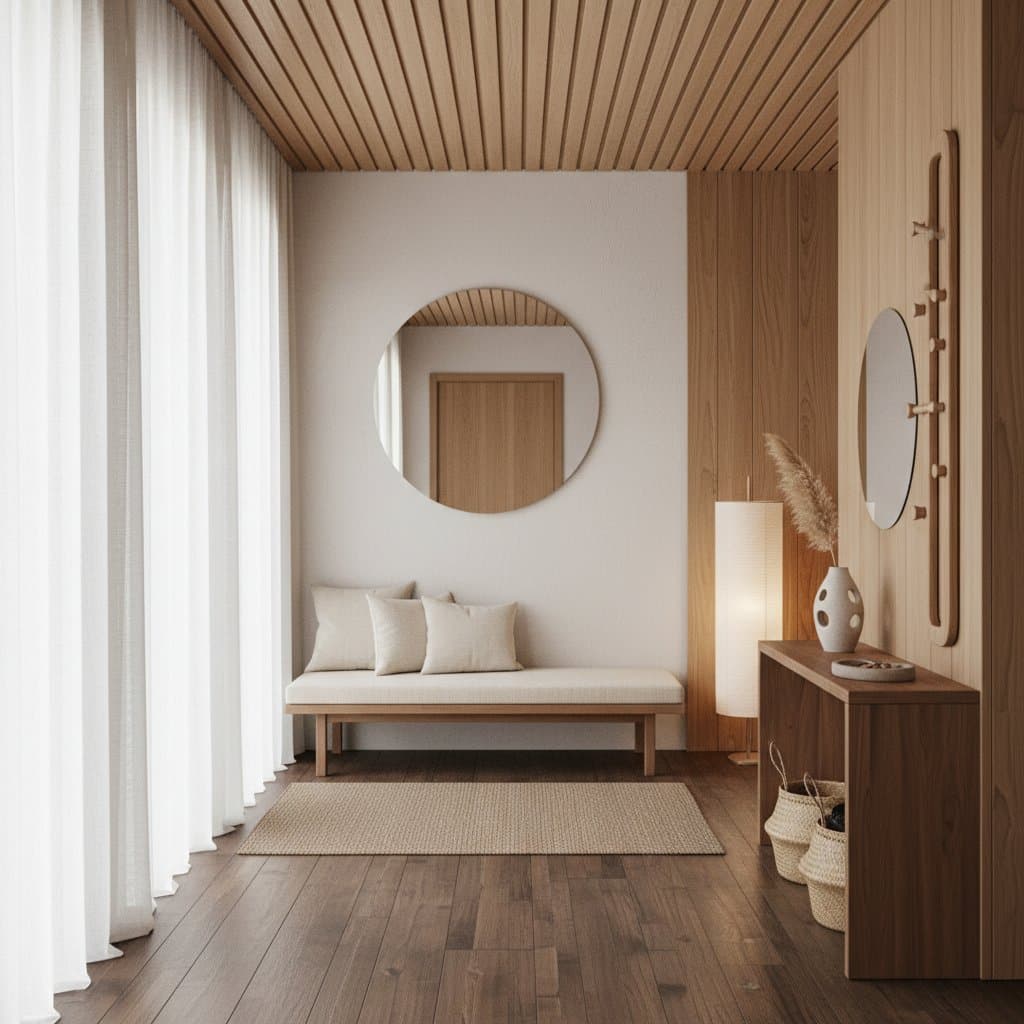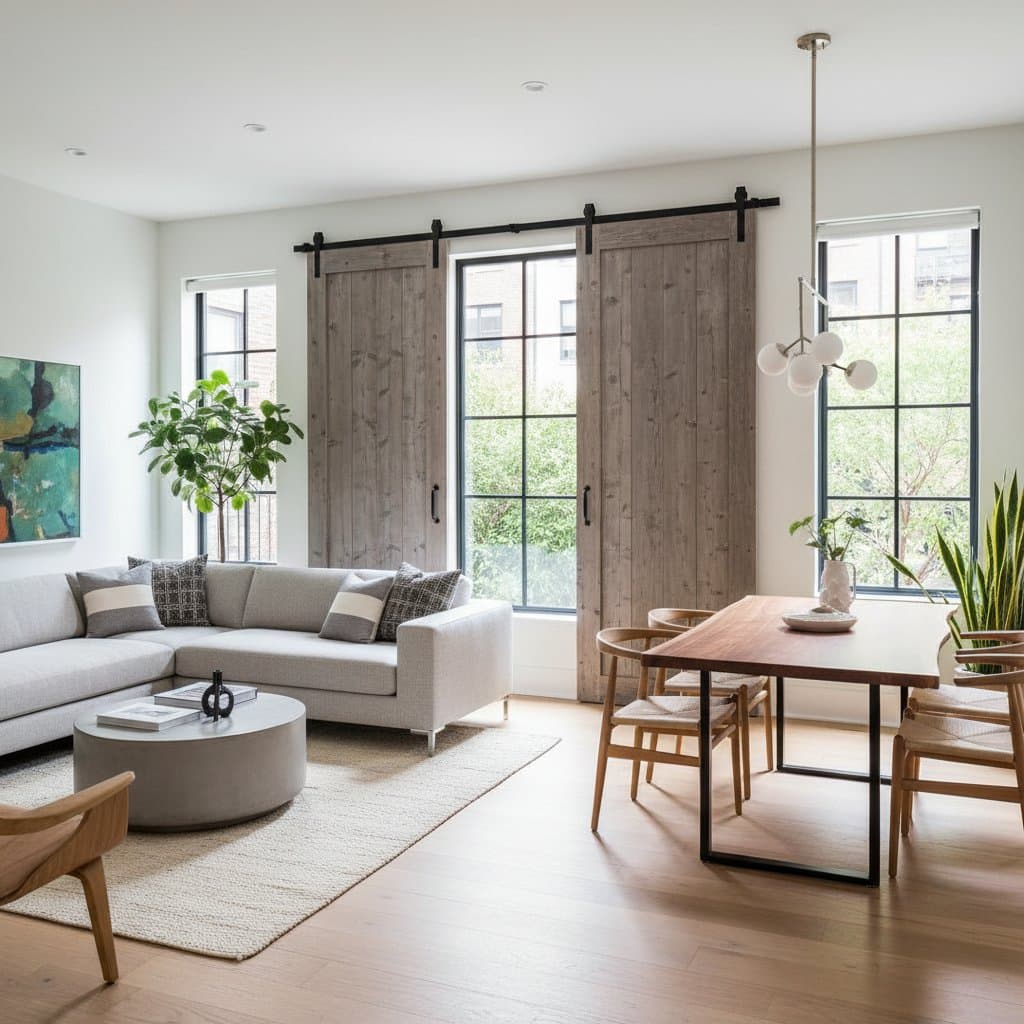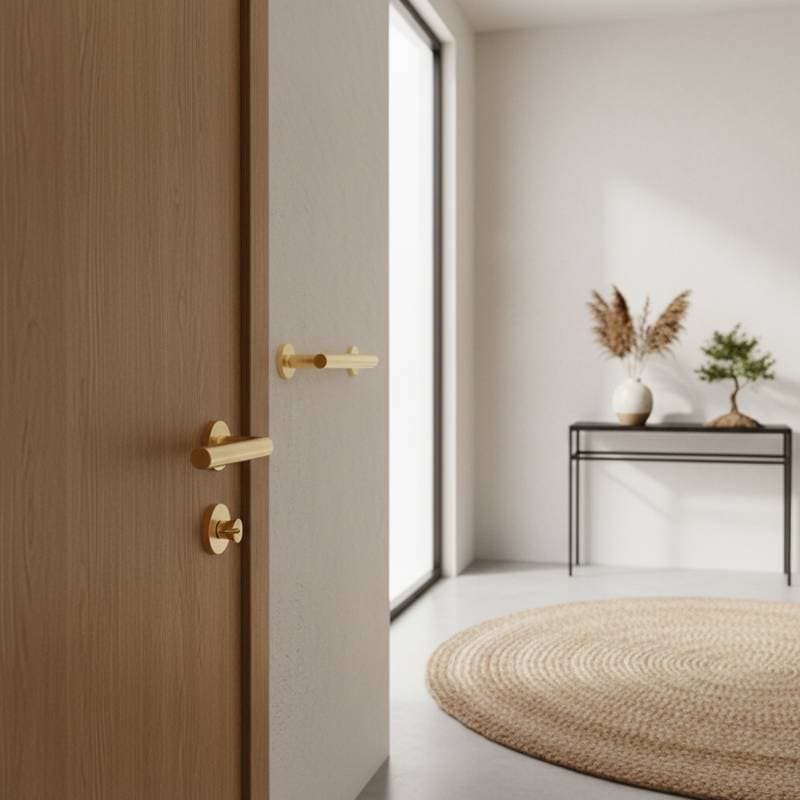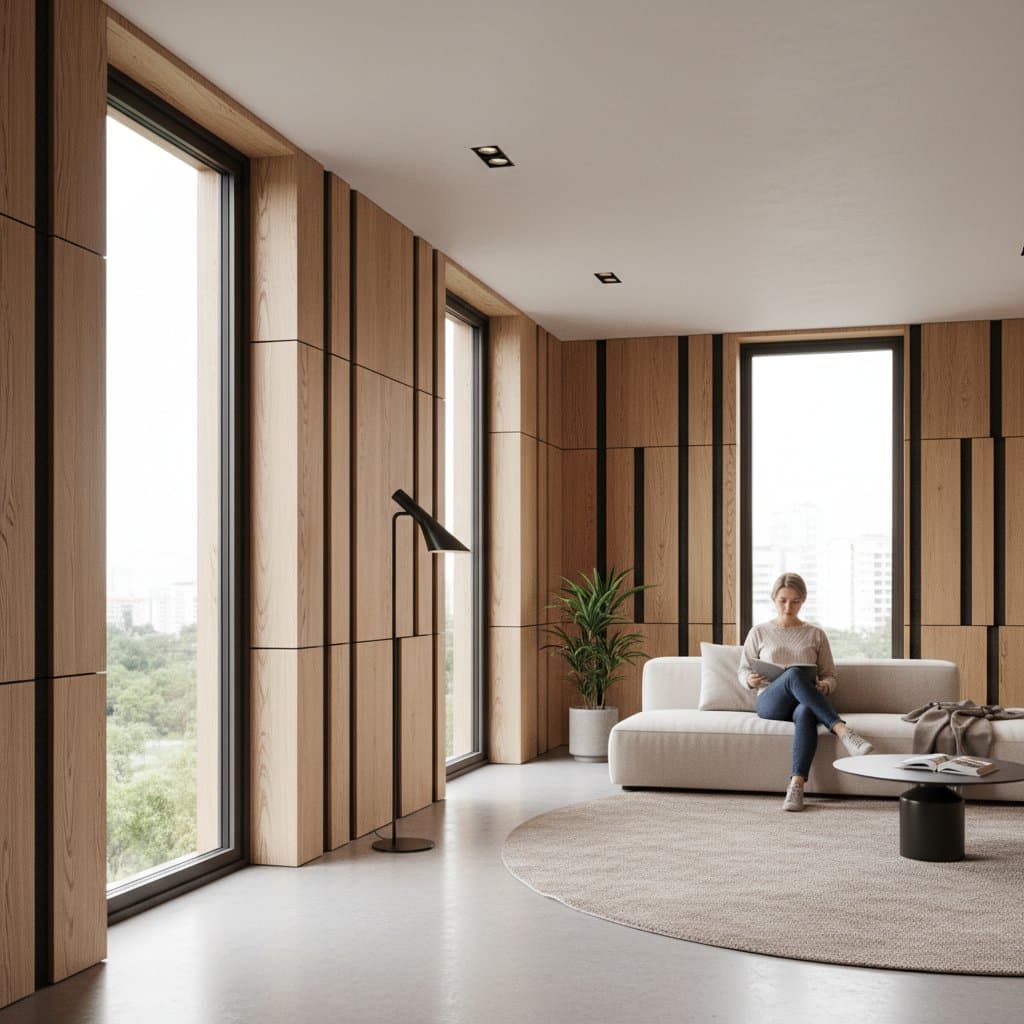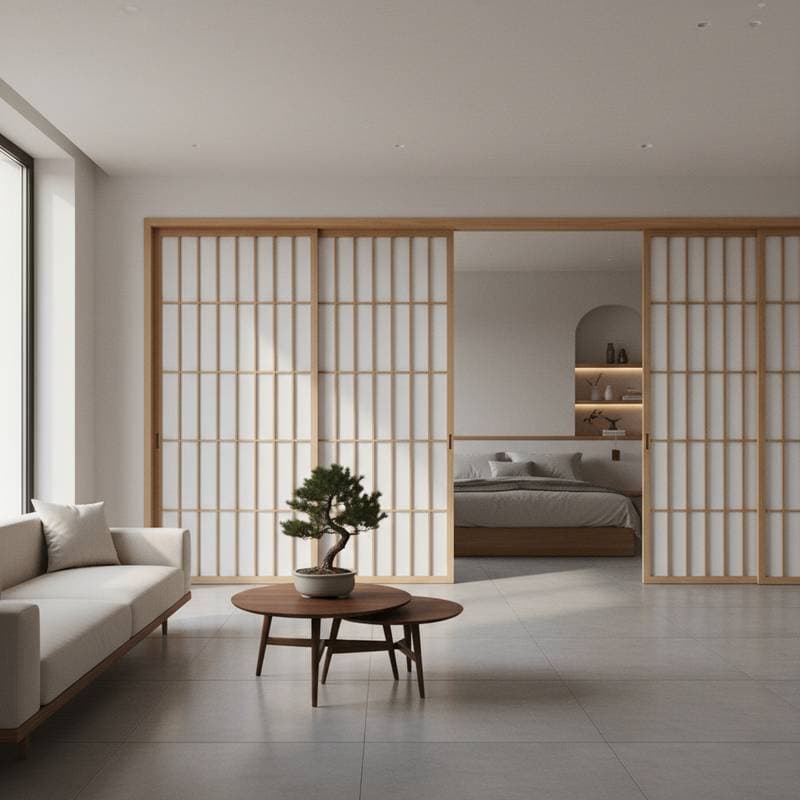The Rise of Wood Tones in 2025 Japandi Entryways
A Japandi-style entryway greets visitors with immediate warmth. Clean lines, organic textures, and subtle wood finishes establish a welcoming tone for the home. As demand grows for serene, practical interiors, wood tones stand out as the core feature of Japandi design. These elements harmonize Japanese minimalism with Scandinavian coziness, yielding entryways that appear modern, rooted, and enduring.
Core Principles of Japandi: Simplicity and Warmth United
Japandi merges two traditions centered on restraint and quality. Japanese design emphasizes precise lines and open areas, whereas Scandinavian approaches introduce coziness via organic elements. This fusion produces an aesthetic that conveys peace and approachability.
Entryways realize this balance via deliberate wood selections. Pale oak, ash, and maple generate a light, expansive feel, whereas walnut or teak introduce subtle richness. The intent remains subtle: to guide movement from exterior to interior with effortless continuity.
Reasons Wood Tones Lead in Japandi Entryways
Wood tones prevail in Japandi settings by linking utility and feeling. Pale varieties bounce light to enlarge compact foyers. Deeper shades anchor the composition, offering structural poise. This interplay upholds the style's emphasis on restraint.
Interior designer Ayaka Mori of Kyoto Interiors states, "Wood serves as both framework and essence in Japandi design. It shapes spatial limits while preserving a tranquil, personal ambiance." Such qualities appeal to those seeking eco-conscious, touchable surfaces that mature gracefully.
Cost Breakdown for Japandi Entryway Enhancements
Renovations in a Japandi entryway typically involve flooring, doors, and integrated storage. Expenses fluctuate based on wood types, treatments, and workmanship. The table below outlines standard ranges:
| Material/Service | Cost Range | Key Features |
|---|---|---|
| Solid wood entry door | $1,200 to $3,800 | Sturdy construction, warm presence, varied finishes |
| Engineered wood flooring | $6 to $14 per sq. ft. | Humidity-resistant, versatile tones, reliable performance |
| Custom wood bench or console | $700 to $2,500 | Integrated or standalone, enhances utility |
| Slatted wood wall paneling | $10 to $22 per sq. ft. | Boosts tactile interest, conceals utilities |
| Professional installation | $50 to $100 per hour | Expert joinery for accurate alignment |
These figures cover materials and labor. A full entryway overhaul generally totals $3,000 to $9,000, scaled to dimensions and complexity.
Choosing Optimal Wood Tones
The chosen tone shapes the room's character. Birch and ash fit light-filled, sparse homes, complementing pale walls, simple pottery, and subdued metal details. Oak in mid-tones delivers versatile, classic appeal suitable for diverse settings. Walnut or ebonized oak brings intensity, aligning with plush fabrics and mineral surfaces.
Evaluate current elements when deciding. Align tones in floors, doors, and furnishings for unity. Introduce variety through grain patterns or surface variations, limiting to two or three shades for restraint.
Entry Doors as Focal Points
In Japandi residences, the entry door transcends mere utility. It forms the initial encounter and influences surrounding details. Flush panels with faint grain or slim vertical accents prevail, often featuring recessed pulls to preserve sleekness.
Installed custom doors range from $1,500 to $4,500. Veneers offer economical authenticity. Opt for solid white oak or walnut for resilience and lasting presence.
Contractor Julian Reyes of Modern Entry Solutions notes, "The door merges substance and skill. A refined wood face conveys excellence upon approach."
Flooring Options for Lasting Japandi Appeal
Flooring provides the base for a Japandi entryway. Ideal choices blend toughness with quiet elegance. Engineered wood strikes the perfect equilibrium of steadiness and value, outperforming solid planks in variable moisture near entrances.
In tight areas, fair tones expand the sense of space; deeper boards foster intimacy. Installation costs $8 to $16 per square foot, varying by wood and treatment. Layer a modest rug in jute or wool to shield the surface and introduce softness.
Integrating Storage for Practicality
Japandi entryways prioritize aesthetics alongside utility. Discreet organization prevents disorder. Benches with concealed sections, wall-mounted ledges, and slim tables uphold simplicity while accommodating footwear and essentials.
Match cabinetry to surrounding woods for seamlessness. A compact bench with storage below runs $900 to $1,200. Expansive units with compartments and niches may exceed $3,000.
Design for ease: position frequent items within reach, tuck away less-used pieces. This setup promotes seamless daily use.
Layering Lighting and Textures
Lighting accentuates wood's inherent qualities. Soft white LEDs pair with raw surfaces to avoid sterility. Opt for inset ceiling units, side-mounted lamps, or hidden strips beneath shelves. Steer clear of bright downlights that cause shadows.
Textures enrich without excess. Basketry, fabric pillows, or unglazed pottery offset wood's evenness. Select items with artisanal marks, reflecting wabi-sabi's embrace of imperfection.
Essential Details for Refinement
Subtle accents amplify impact. Brushed metal or dark fixtures provide edge. Quiet hinges and flush latches sustain understated grace. One artwork or organic display injects individuality amid minimalism.
Extend tones into adjacent areas for continuity. This approach enlarges perceived scale and intent.
Prioritizing Sustainability and Durability
Wood appeals for its renewability and endurance. Source from Forest Stewardship Council-certified suppliers to support ethical harvesting. Engineered products with non-toxic coatings improve air purity.
Over time, wood retains worth. Refinishing every few years extends life spans. Basic upkeep includes gentle cleansing and periodic sealing.
Maintenance Strategies from Experts
Wood demands light attention but yields rich patina. Maintain even humidity to avert distortion. Place mats at thresholds to block grime and dampness. Address light marks with sandpaper and oil renewal.
Contractor Lisa Tran of Natural Homeworks observes, "View wood as a dynamic element. It evolves with climate and gains depth through use. Thoughtful upkeep not only preserves but elevates its allure."
Ensuring Harmony Throughout the Home
Japandi excels in seamless progression. The entryway must blend into neighboring zones. Repeat wood shades, light warmth, and material echoes for cohesion. Matching hardware or moldings reinforces unity.
For phased updates, begin with doors and floors. These anchors inform subsequent decisions.
Steps to Realize Your Japandi Entryway
Start by identifying key woods and illumination. Eliminate excess to highlight essentials. Allocate funds balancing form and purpose. Partner with specialists in refined woodworking.
Consistent care safeguards longevity. Simple routines and environmental controls preserve vibrancy.
A Japandi entryway serves as a thoughtful threshold, infusing daily life with serenity, skill, and natural ties.

